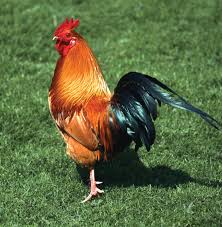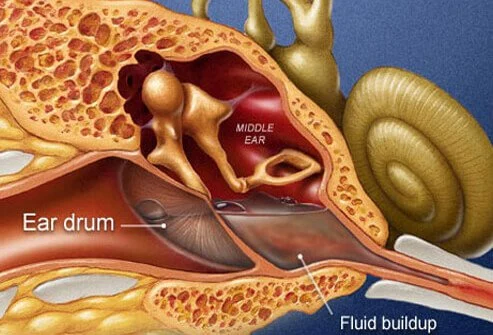Unlock Expert-Level HTML, CSS, and JavaScript Tricks for Web Developers
Web developers always strive to enhance their skills and stay ahead of the competition. Unlocking expert-level HTML, CSS, and JavaScript tricks is crucial for web developers as it allows them to create more dynamic and engaging websites. With expert-level knowledge of these programming languages, developers can implement intricate designs, create interactive user interfaces, and optimize website performance. These advanced tricks enable web developers to produce high-quality websites that deliver an exceptional user experience and stand out in the digital landscape. By mastering these skills, web developers can attract more clients, increase job opportunities, and establish themselves as industry experts.
Wikipedia
updated May 26, 2023
Chicken
From DA Wikipedia, the free encyclopedia
|
This article needs additional citations for verification. (May 2021)
|

The chicken (Gallus gallus domesticus) is a type of domesticated fowl, a subspecies of the red junglefowl (Gallus gallus). Chickens are one of the most common and widespread domestic animals, with a total population of 23.7 billion as of 2018.[1] up from more than 19 billion in 2011.[2] There are more chickens in the world than any other bird or domesticated fowl.[2] Humans keep chickens primarily as a source of food (consuming both their meat and eggs) and, less commonly, as pets. Originally raised for cockfighting or for special ceremonies, chickens were not kept for food until the Hellenistic period (4th–2nd centuries BC).
Genetic studies have pointed to multiple maternal origins in South Asia, Southeast Asia, and East Asia,[5] but with the clade found in the Americas, Europe, the Middle East and Africa originating in the Indian subcontinent. From ancient India, the domesticated chicken spread to Lydia in western Asia Minor, and to Greece by the 5th century BC.[6] Fowl had been known in Egypt since the mid-15th century BC, with the "bird that gives birth every day" having come to Egypt from the land between Syria and Shinar, Babylonia, according to the annals of Thutmose III
Terminology
In the UK and Ireland, adult male chickens over the age of one year are primarily known as cocks, whereas in the United States, Canada, Australia and New Zealand, they are more commonly called roosters. Males less than a year old are cockerels.[10] Castrated or neutered roosters are called capons (surgical and chemical castration are now illegal in some parts of the world). Females over a year old are known as hens, and younger females as pullets,[11] although in the egg-laying industry, a pullet becomes a hen when she begins to lay eggs, at 16 to 20 weeks of age. In Australia and New Zealand (also sometimes in Britain), there is a generic term chook /tʃʊk/ to describe all ages and both sexes.[12] The young are often called chicks. Chicken originally referred to young domestic fowl.[13] The species as a whole was then called domestic fowl, or just fowl. This use of chicken survives in the phrase Hen and Chickens, sometimes used as a British public house or theatre name, and to name groups of one large and many small rocks or islands in the sea (see for example Hen and Chicken Islands). In the Deep South of the United States, chickens are referred to by the slang term yardbird.[14]
General biology and habitat
Chickens are omnivores.[15] In the wild, they often scratch at the soil to search for seeds, insects and even animals as large as lizards, small snakes,[16] or young mice.[17] The average chicken may live for five to ten years, depending on the breed.[18] The world's oldest known chicken was a hen which died of heart failure at the age of 16 years according to the Guinness World Records.[19] Roosters can usually be differentiated from hens by their striking plumage of long flowing tails and shiny, pointed feathers on their necks (hackles) and backs (saddle), which are typically of brighter, bolder colours than those of females of the same breed. However, in some breeds, such as the Sebright chicken, the rooster has only slightly pointed neck feathers, the same colour as the hen's. The identification can be made by looking at the comb, or eventually from the development of spurs on the male's legs (in a few breeds and in certain hybrids, the male and female chicks may be differentiated by colour). Adult chickens have a fleshy crest on their heads called a comb, or cockscomb, and hanging flaps of skin either side under their beaks called wattles. Collectively, these and other fleshy protuberances on the head and throat are called caruncles. Both the adult male and female have wattles and combs, but in most breeds these are more prominent in males. A muff or beard is a mutation found in several chicken breeds which causes extra feathering under the chicken's face, giving the appearance of a beard. Domestic chickens are not capable of long distance flight, although lighter chickens are generally capable of flying for short distances, such as over fences or into trees (where they would naturally roost). Chickens may occasionally fly briefly to explore their surroundings, but generally do so only to flee perceived danger.
Behavior biology and habitat
Movies
My Top 3 Movies:
Other Good Movies:
- Alien










